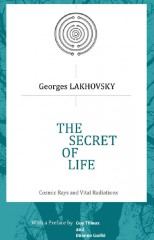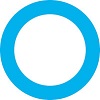
Author : Lakhovsky Georges
Title : The secret of life Cosmic Rays and Vital Radiations
Year : 1939
Link download : Lakhovsky_Georges_-_The_secret_of_life.zip
I was honoured to accept the invitation to write a preface for the on line publication of this book, to pay homage to the brilliant pioneer Georges Lakhovsky and to the man who pointed me towards him, Michael Vladimirovitch Skariatine, who had not only known him well but also acknowledged, under the pseudonym of Enel, the work and realizations of "Secret of Life". This is also a chance to recall those wonderful moments I shared with Serge Lakhovsky in the Colysa laboratories that he directed in Paris, and our work together in the Orsay faculty under Etienne Guille from 1975 to 1985. Georges Lakhovsky was born near Minsk in Russia to a family oflawyers and oriental language teachers. As an alumnus of the Odessa Beaux-Arts and the Arts et Metiers schools, and an engineering graduate, he came to France in 1894 to study physics and civil engineering at the Sorbonne. At the same time he was enrolled at the Paris Faculty of Medicine. After escaping a railroad accident he designed a step bolt to lock rails safely to sleepers; he also devised a ruler to measure the slope of a railway line and to reduce the time needed to lay down rails by a third. In 1905 he married a young Parisian and they would have three children: Pierre in 1907, Marie in 1909 and Serge in 1913. In 1907, Lakhovsky lost his father. In that same year he naturalized as a French citizen. After the 1914-1918 war, Georges Lakhovsky abandoned his work in industry to devote his time to scientific pursuits, with a constant emphasis on linking science to philosophy for living. He believed in the possibility of creating a "Science of Happiness" in society. He took a keen interest in wireless telephony, then in its infancy. He also participated together with transmissions specialist, General Ferie, and he formed important relationships with Marconi and d'Arsonval, and the latter would preface his books. He invented the multiple electrode radio lamp and he took out several patents for refining and improving sound reproductions, earpieces, double-lined loudspeakers filled with a mi.x of an oil fluid, gums in solutions with glycerine jelly. The resulting sounds did not suffer any impairment and had an acoustic with a richer range in its harmony of frequencies. Lakhovsky drew an analogy between acoustic waves and their harmonics, luminous waves, colours, electromagnetic waves which, although do not spread within the same media, spread through reflection, refraction and bear similarities to forces of induction, resonance and oscillation phenomena. He formed a hypothesis on the chemistry of the living: physical bodies, in their component parts, are vibratory supports whose oscillations are animated by radiating vibrating energies. Lakhovsky thought that the living cell is created by integrating the oscillatory phenomena of heat, light, electricity and magnetism, organic chemical corpuscles responding. in varying degrees of manifestations, to the laws of exchange and interlinkages, resonances and inductions existing on earth, in the solar system and intergalactic space. This is Georges Lakhovsky's theory on the Origin of Life. He envisaged a number of beneficial applications for cellular vitality. the stimulation of the human metabolism and agricultural, veterinary and medical adaptations by demonstrating the action of the oscillating cir· cuits or Hertz' dipoles, of his radio cellular oscillator and later his Multiple Wave Oscillator. The first experiments described in this book were followed up in several countries for cellular multiplication, germination activated from seeds, the growth of the silk worm, the ontogeny of certain amphibians, the metamorphosis of tadpoles, the rejuvenation of thoroughbred stallions with the finding that horses' blood contained a new diatomic molecule with two parabolas, by analyzing the positive rays. These resuJts were discussed in official scientific journals and publications and presented at international congresses, the last of which took place in Vienna in Austria in 1937. In 1931. "Cellular Oscillation" was published by Doin in Paris, showing the dozens of experiments that had taken place in France and vari· ous other countries by scientific bodies over the course of several years. In 1933, Lisbon's Science Academy's director for life published a book called "Matter" that examined Lakhovsky's theory on spatial energy and Universion and explained that ethyl alcohol + formic acetic acid follow a new etherification process called "new ondulatory chemical mechanism" under the effect of the oscillating circuits (or Hertz' dipoles). OsciJiating circuits cause wines to age, and the acidities in oils to lower. Spectrums, capillary constants and fermentations are innuenced by these devices. The type of metal used for the circuit has a significant effect on these phenomena. The results of this research were submitted to Paris' Academy of Sciences, London's Royal Society, Berlin's Chemical Society and Portugal's Academy of Sciences (20 July 1933). The author was Antonio de Pereira Forjaz, senior professor at the University of Lisbon and director for life of Portugal's Academy of Sciences. In 1939, the chemical engineer Courbe submitted a thesis, accepted by his fellow scientists, regarding the application of oscillatory circuits on approximately 120 species of vegetables. But Georges Lakhovsky's most important work centred on the treatment of more serious diseases with his Multiple Wave Oscillator, in use since 1931. Lakhovsky received authorization from the managers of several Parisian hospitals to provide care for a number of cancer sufferers, In some cases achieving unexpected cures from 1931 and 1938. In 1983 the detailed lists of these results were published in jean-Louis Portes' doctoral thesis in medicine at the Pitie·Salp~triere Faculty of Medicine, under the supervision of its chairman Professor Rulliere. Lakhovsky left in exile for the United States in 1940, following the advice of his friends and contacts in the French government, due to his writings against biological racism that was being advocated by the national socialists in occupied France. Lakhovsky was welcomed in New York by Doctor Disraeli Kobak who would go on to treat several thousand patients suffering from various diseases using the Multiple Wave Oscillator between 1941 and 1958. Georges Lakhovsky died on 31 August 1942 at the Adelphi Hospital in Brooklyn, after suffering an accident. He was 73 years old. In January 1945, the "Lakhovsky Multiples Waves Institute" was founded in New York. Its chairman was Disraeli Kobak, MD. who was also "Editor Emeritus" of the Physical Therapy journals; its deputy chairman was scientist Albert Verleyh and Serge Lakhovsky was secretary. During the 1960s Serge Lakhovsky returned to France and continued work on a modernization of the Rad io Cellular Oscillator; a Multiple Wave Oscillator and in particular the seven-metal oscillating circuit for the Colysa company. In parallel, )oseph Salvat in Beziers worked for thirty years on the fourteen-metal oscillating circuit until 1963. He isolated 14 frequencies of infinitesimal quanta emission supplied to tissues, and he called his treatment "bio-dynamic therapy". An alumnus of the Paris Polytechnic School. he has achieved remarkable cures for several serious diseases. Many doctors would not hesitate to recommend terminal-case patients to him. In Marseille, Edmond Vernet resumed treatments using the Multiple Wave Oscillator from 1955 to 1965, in collaboration with Lakhovsky's secretary, A. Givelet. After some fifteen years, hundreds of Multiple Wave Oscillators were being reused by veterinarians, doctors and surgeons to treat several diseases, mainly in Austria, Belgium, Canada, Germany, Italy, Luxembu rg. Monaco, Morocco, the Pacific Islands, the Philippines, Portugal, the Russian Federation, Spain, San Marino, Switzerland and the United States. In France, Professor Etienne Guille of the Faculty of Orsay has started re-examining various projects inspired by the ideas of Lakhovsky, Sal vat, Vernet (refer to postface of this book). Lakhovsky has handed on to us several works inspired by the universally recognized golden rule of Good WUI: do to others what you would have them do to you. His conceptofcellu· lar oscillation is based both on science and metaphysics. He invested his fortune and his time in an attempt to understand the mechanisms of life, its balance, the root of illness. He used his inventions to stimulate the memories of healthy cells, all-powerful cells and multi-potential cells in order to provide organized bodies the means with which to rediscover Harmony by reinforcing the cell's vitality. He promoted a way of living and a philosophy that was opposed to totalitarian doctrines, whatever their source or whatever they were, especially if they opposed the freedom of Existence in a society based Work continues quietly and successfully, taking into account the contributions of quantum physics to biology and cancer research, particu· larly in regards to research biochemical, biophysical and morphological changes to cancerous cells. The role of the membrane is defined on the basis of the role of electromagnetism in the organism.oppression and informants, or a repressive system that imitated freedom. The Multiple Wave Oscillator is used by various laboratories and qualified practitioners in the countries listed above. The Oscillators are assembled, set up and manufactured in Holland and Switzerland. With this new edition, published in Mexico, we hope to help, inform and motivate new generations of researchers, practitioners in Latin America. Guy Tbieux. April 2010. ...

Gaidoz Henri - Etudes de mythologie gauloise
Auteur : Gaidoz Henri Ouvrage : Etudes de mythologie gauloise Année : 1886 Lien de téléchargement :...














